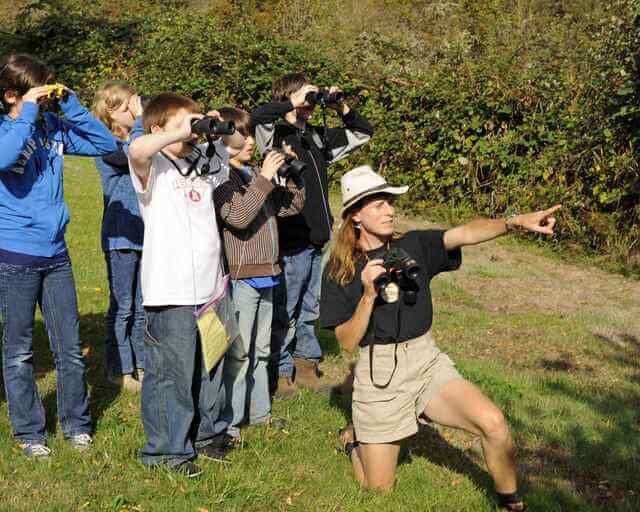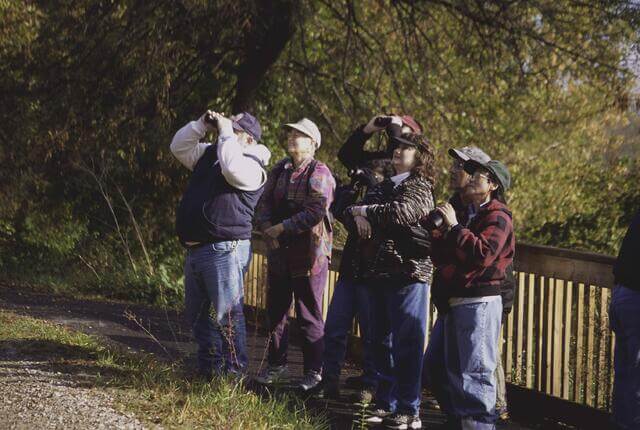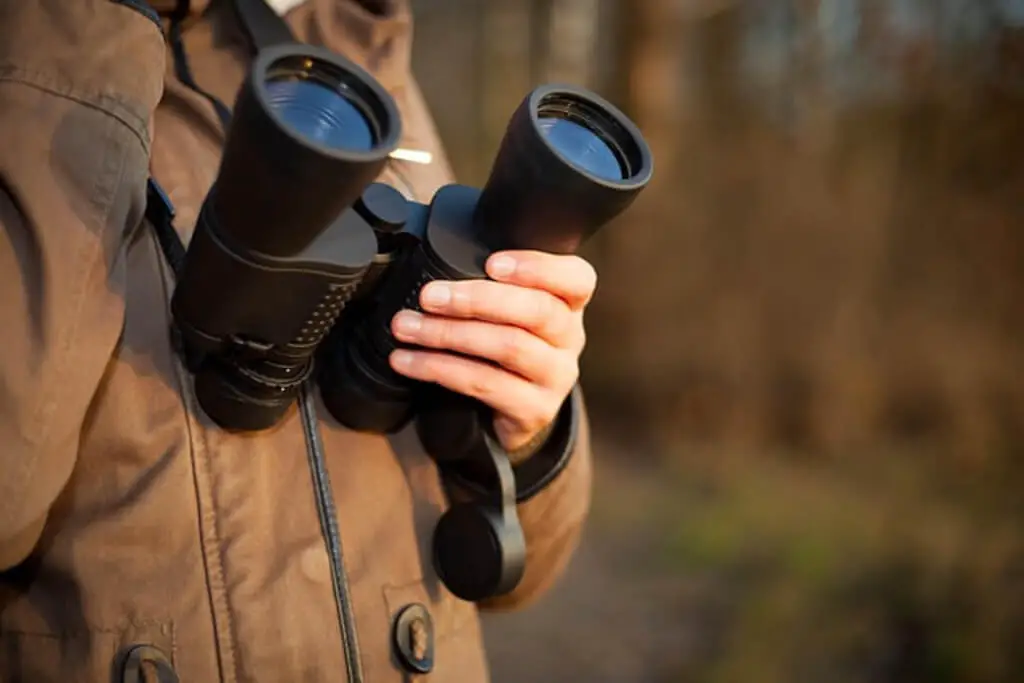
As the COVID-19 lockdown continues, people are starting to get creative with how they spend their time. One popular activity that has seen a resurgence is birdwatching.
With more people staying home, there are fewer cars on the road and less noise pollution overall. This makes it easier for birds to be heard, and also makes it safer for them to approach humans.
While birdwatching can be a fun and relaxing activity, it’s important to remember that there are still risks associated with COVID-19. Always maintain a safe distance from other people, and be sure to wash your hands after you’re done.
Table of Contents
Can I Go Birdwatching in Lockdown?
One of the best things you can do is go birdwatching! COVID-19 lockdown restrictions mean it’s time to go birdwatching. Yes, birdwatching is an excellent hobby to take part in during COVID-19 lockdown restrictions.
Birding is one of the best hobbies for everyone, especially during a COVID-19 lockdown restriction because there are fewer people outside and birds can be easily spotted due to this, which makes them more approachable and easy to watch if you’re new to it!
There are many great reasons why people should consider going birdwatching during the COVID-19 lockdown:
The Benefits of Birdwatching
It’s Free for Everyone!
There is no better way to escape the pressures of life than with this hobby, which requires very little equipment or money. There are few greater pleasures than listening to birdsong while looking for birds.
It’s Fun to Experience Nature
People all over the world participate in birdwatching every day, regardless of location or skill level. It’s not necessary to travel far or purchase expensive equipment to enjoy this hobby – there are many local parks that offer opportunities for good birdwatching year round.
No matter your motivation, it is hard not to feel rejuvenated by the sights and sounds of these remarkable creatures from around the world.

It’s Good for Mental Health
If you’re itching to get out of the house during COVID-19 lockdown restrictions, then we recommend checking out birdwatching. Birdwatching is a fun and easy way to relax with friends or family members and offers an excellent opportunity for bonding time in nature.
It’s also great for mental health, as it can promote mindfulness and relieve stress levels while simultaneously providing educational opportunities. Best of all, there are plenty of different types of birds to observe so everyone can enjoy something new!
Walking is Good Exercise
For those of you who are looking for a way to get exercise during lockdowns, birdwatching is the perfect solution. Walking is one of the best ways to get your heart rate up and keep your metabolism high throughout the day.
The act of walking also gives you much-needed fresh air and provides mental stimulation through sight, sound, smell, touch and taste. With these benefits in mind, it’s no wonder that people flock to birdwatching as an opportunity for exercise during lockdown periods.
Helps with Depression
Many people turn to bird watching as a hobby. But in the case of covid-19 lockdowns, it can also be therapeutic and provide mental stimulation. During these periods, listening to birds sing is an excellent way to reduce stress and burnout.
During these lockdowns, when people are often confined in their homes for days on end with little interaction from the outside world, they risk experiencing symptoms of depression and social isolation as well as feelings of boredom and anger. These effects can be mitigated by keeping up one’s spirits through creative activities like listening to birds sing.
Patience is the Key to Birdwatching
There are many people who enjoy birdwatching, but patience is the key to being a successful birder. Birdwatching requires time spent waiting for a glimpse of the birds you’re looking for, and patience.
It takes an incredible amount of time just sitting in one spot, sometimes with nothing happening at all. It also requires being patient enough to be quiet so as not to scare away any animals that might come into view.
Birdwatchers must often have long periods without seeing anything interesting or new happen but still remain patient. Patience is an important virtue when it comes to being able to see birds in their natural habitat.
Where to go Birdwatching?
Birdwatching is a hobby that many people can enjoy during COVID-19 lockdowns. One can do it in their own yard, parks, fields, or even the woods. There are different kinds of birds to look for depending on what type of environment you’re in and which part of the country you live in. With so many places to go birdwatching there’s no excuse not to take advantage of this time and get out into nature!
Get a Bird Feeder
Bird feeders are a must-have for birdwatchers. If you want to see all the beautiful birds in your own yard, then it is essential that you purchase and use a bird feeder. A bird feeder is essential for any individual who wants to watch birds without having to go on a long hike or travel far from home. With just one simple purchase, anyone can have hours of entertainment watching birds at their backyard feeding station. One feeder I would highly recommend is this Heavy Duty Metal Frame Squirrel Proof Bird Feeder. You can find it on Amazon.

Best Birdwatching Tips
Tip# 1: Get a birdwatching kit.
A birdwatching kit is a necessity for beginners. It’s hard to get started without the right equipment, and binoculars are one of the most important pieces of gear. The best place to start looking for a pair of binoculars is here.
There is a wide selection of options available in different price ranges, from $60-200+. If you are a beginner, one of the first things you should do is find out what your budget for this hobby is.
When starting out, it’s better to spend less money on more basic equipment, and invest in some good quality binoculars or monocular as you progress. You also want to make sure that you have all the necessary equipment such as field guides, and a list of nearby areas where birds may reside.
Tip# 2: Find out what birds are in your area of the country.
With the changing of seasons and migration patterns, many birds will soon be making their way to your area. Before you go out birdwatching make sure you know what species are currently nesting in your area.
For example, some birdwatchers might want to take a look at the American Goldfinch or the Brown Thrasher if they live in eastern North America; meanwhile someone living on the west coast would likely be looking for Western Scrub-Jays or Anna’s Hummingbirds.
Tip# 3: Learn how to identify birds by sight and sound.
Many people who enjoy birdwatching don’t know the different types of birds by sight and sound. If you want to become a better birder, it’s important that you get familiar with what each type of bird sounds like and looks like. Bird identification is one of the most enjoyable aspects of birding.
Whether you’re an expert or just starting out, there are many ways to hone your skills in identifying birds by sight and sound. If you’re not sure what these birds look like, then grab a field guide book on Amazon or your local bookstore.
Tip# 4: Join a local birding club!
– Join a birdwatching club if there is one nearby for more opportunities to go birdwatching with others during COVID-19 lockdown. They are great for getting together with others and can answer your beginner’s questions.
Tip# 5: Do not scare the birds!
A big mistake many beginners make is carrying their binoculars or camera while walking in the forest, this scares away birds because they don’t know what it is and will fly away as soon as possible, so they don’t get too close.
Tip# 6: Be Prepared
You will want to make sure you are prepared for this activity, so read on for some tips. -Bring a water bottle and snack with you if possible -Wear clothes that can get dirty and do not wear any bright colors or patterns -If it’s windy, bring an umbrella
Tip# 7: Backyard Feeders
The best way to get started with birdwatching is by installing a bird feeder in your yard. There are many types of feeders on the market, but one thing they have in common is that they should be mounted at least 10 feet from any other objects, like trees or shrubs. This ensures that birds will come to your feeder for food and not just fly away.


